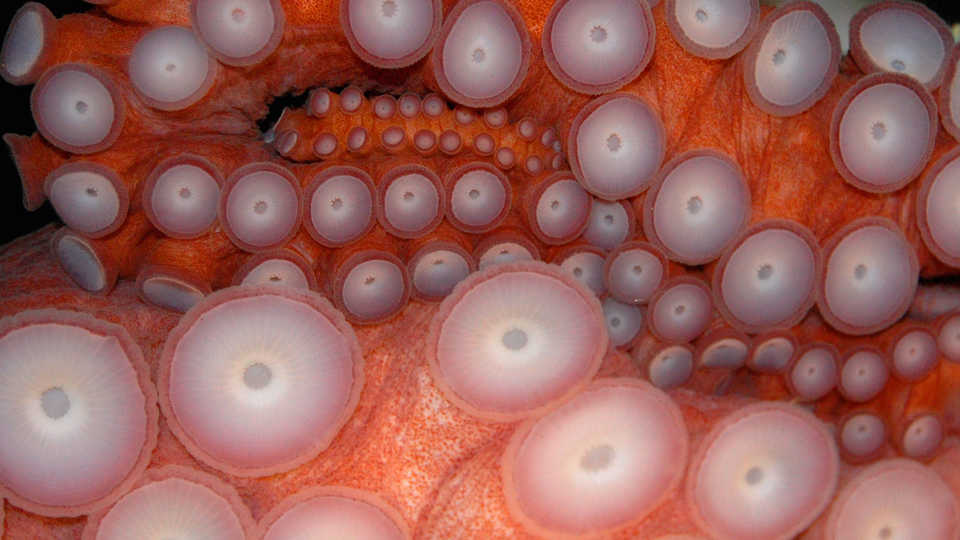Science News
Happy World Octopus Day!

It’s October 8—the perfect day to celebrate these eight-armed cephalopods! As our own octo-expert Rich Ross told us a few years ago, “Octopus are like super-caffeinated snails with arms and no shell. They’re vicious predators and their ability to camouflage is unbelievable!” No wonder we’ve written about them so often! As we celebrate these brilliant (literally) invertebrates today, here are a few highlights from previous octo-posts…
While octopuses are very smart, it would be very difficult for the animal to consciously handle the individual movement of eight arms. So octopuses employ a different method. Each octopus arm is controlled by a set of neurons at the appendage’s base, not by the brain. In fact, the cephalopods don’t even know where their arms are or what they are doing at any given moment. Given this, and the fact that their arms have very strong suckers—tentacles—why don’t the arms get all tangled up? Researchers discovered that octopus skin has a chemical signal that somehow repels the suckers, making them unable to stick to their own arms. Of course! Did you expect anything less from this skin that can also change color and texture in heartbeat?
Earlier this year, scientists published the first-ever whole genome analysis of the octopus, specifically, the California two-spot octopus, Octopus bimaculoides. The publication confirmed the fact that these animals are incredibly unique on our planet, “aliens,” as others have described them. “With a few notable exceptions, the octopus basically has a normal invertebrate genome that’s just been completely rearranged, like it’s been put into a blender and mixed,” says Caroline Albertin, of the University of Chicago.
Octopus-specific genes were identified, large numbers of which were found in the nervous system, retina, and suckers. The researchers were also able to track down the genes involved in adaptive coloration, which allow the octopus to change its skin color and texture in order to blend into its environment and escape predation. “We’ve found hundreds of novel genes that don’t have counterparts in other animals and may be involved in this unique camouflage process,” explains co-author Daniel Rokhsar of UC Berkeley.
As unusual octopuses are on planet Earth, the larger Pacific striped octopus is an oddball among oddballs. This octopus, often seen here at the Steinhart Aquarium, is social, even when mating. Since the females of most octopus species have a reputation of eating their mates, the males often stay far from their partners’ mouths during the act. But for the Pacific striped octopus, the male and female come together in an intimate beak-to-beak, sucker-to-sucker position. The two also share meals and even cohabitate in the same den for days at a time.
In addition, its predation techniques are unique, if not a bit cartoonish. Instead of pouncing on their prey, the larger Pacific striped octopus sneaks up, touches the prey with one of its arms, and scares the poor creature into its other arms! Surprise! “Personally observing and recording the incredibly unique cohabitation, hunting, and mating behaviors of this fascinating octopus was beyond exciting—almost like watching cryptozoology turn into real-life zoology,” Ross says. “It reminds us how much we still have to learn about the mysterious world of cephalopods.”
Finally, this last blurb isn’t really about octopuses but rather jawfish. The mimic octopus is remarkable in its ability to mimic sea snakes, lionfish, flounders, and more! And several years ago, a diver caught a glimpse (and video) of a fish mimicking the mimic octopus. Academy scientists recognized the jawfish species and published a paper (with the diver) about this unique behavior. Luiz Rocha and Ross surmise that the jawfish hitches a ride with the octopus for protection, allowing it to venture away from its burrow to look for food—a case of “opportunistic mimicry.”
Enjoy Octo-day!
Image: steve_lodefink/Flickr